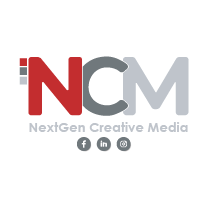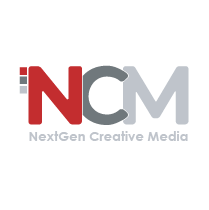

But First, Who Are NextGen Creative Media?
NextGen Creative Media was established in the summer of 2016 as a specialist digital marketing company with the aim of assisting and helping businesses achieve success through social media and other digital platforms. NextGen Creative Media offer more flexibility, creativity and innovation in the digital marketing arena.
We create engaging digital marketing campaigns and strategies for our consumers across a wide range of industries and unique niches within the African context.
Our work is creative, fast and we use out of the box thinking.
So How Does Your Website Stack Up?
What is the purpose of your website?
The first and most important question has to do with the reason why you’re launching your website to begin with.
Ask yourself: what do you need from this website and what kind of purpose do you want it to serve?
Who is your target audience?
The next question that presents itself is about your website’s target audience, or the people you’d like to attract as visitors.
You will want to think about who would have an actual interest in your work and if they would pay for it.
You may also need to ask more specific questions, like “What level of experience will my target audience have with the subject matter?” and “How should I go about encouraging them to make a purchase?”
How will you attract the audience to your website?
The immediate follow-up to the question before is how will you attract your target audience and get them to see your content. The answer to this question lies in what’s going to become your future promotional strategy.
Use digital marketing to your advantage. Launch our own blog. Stay active on social media. Regularly haunt online forums. Practice search engine optimisation. Even pay for ads if necessary.
Your goal is not just to attract traffic to your website, but to attract the right demographic of traffic.
What will keep the audience coming back?
Once you’ve attracted visitors to your website, the next step is to retain them. Internet users have a short attention span, and they rarely stay on a single page for too long. Unless your website is filled with fresh content to keep readers interested, and there are things that they can do to keep themselves engaged on your website, they will likely just leave.
There are a number of ways to increase the average time spent on your website. First, you will need an analytics tool.
Google analytics, for example, can help you figure out your bounce rate, or the percentage of people who entered your website and left without clicking on anything else. Introducing a comments section to your blog, adding social media buttons, and including a call to action are all proven ways to improve your bounce rate.
Is there a call to action?
A call to action is an element on your website page, usually a button or a form, that encourages visitors to take some kind of action or interact with your website. This is the most important element of building a website because it helps you translate visitors into customers.
You have to ask yourself, “What kind of action do I want users to take once they’re on my website?” Depending on the answer, you may have to take a specific approach with web design or content ideation.
A call to action can be as simple as a sign-up button for an email newsletter, or a link to a product page, but it has to be designed to draw attention. The entire website design is built around this call to action.
How will you stand apart?
There were 1.72 billion websites in the world as of 2020.
Whatever your industry and approach, chances are it’s been done before.
But, do you bring a unique perspective to your line of work? Do you have access to unique sources of information in your industry? Do you have a good story to tell? If so, you might just have a shot at making your website truly distinctive.
It’s possible to differentiate your website and brand with nothing more than a unique voice or writing style. But if you have more than one way to beat the competition, it’s always an advantage.
What will your primary source of traffic be?
There are two types of sources that can be used to attract visitors to your website: organic and inorganic/paid.
Organic traffic is derived from search engines, unpaid links on other websites, and direct hits from people’s browsers. Inorganic/paid traffic, on the other hand, is traffic generated through money, such as advertisements and paid promotions.
The idea behind a successful website is to maximise organic traffic and use inorganic/paid sources judiciously. This is because organic traffic improves your website’s ranking in search engines, while inorganic/paid traffic does not. You need to figure out a way to drive as much organic traffic to your website as possible, through search engine optimisation (SEO) and social media marketing (SMM).
Who will create your website’s content?
This may seem obvious, but a good website needs content creators who regularly replenish it with fresh material.
Content creators are usually writers, artists, photographers, or even all three! You can either create your own content, which is the recommended way for individuals and small businesses, or you can pay someone to do it for you.
Without content, visitors will have no reason to access your website. Think long and hard before you assign someone the role of creating content for your website.
What is your total budget?
Creating a website isn’t necessarily expensive, but it can be, depending on your requirements. If you’re about to launch a website for professional reasons, it is wise to have a budget in place before you proceed further, and we’ll work within that budget.
How much money in total are you prepared to spend on your website? Once you have figured that out, try to divide your budget into separate categories like hosting, web design, and marketing campaigns.
Depending on your specific use case, you’ll need to suitably divide your budget among all these categories to achieve the best results.
We’re happy to work within your budget requirements and package our offering within your means.
So How Does Your Digital Media Stack Up?
Does the agency understand your organisation’s business objectives?
One of the first questions an agency should ask is, “What are your business objectives?” If the agency isn’t tying its digital advertising efforts to those broader business objectives, then you’re missing out.
Does the agency understand your target audience?
Identifying your target audience and understanding their buyer’s journey requires more than just a phone call. Your audience is more than a set of demographics. They’re more than a persona spelled out on a page.
Make sure an agency is putting in the work to dive deep into your customers’ habits and behaviours, preferred touch points, and journey to purchase. These elements work together to inform an effective digital advertising strategy.
What tools are used to reach your target audience?
The more you understand who your audience is, the better you can reach them. And that leads to the next step of determining where and how to reach them. We look at your stats to try to better understand your clients and customers. This leads to better campaigns.
Is the agency nimble and open to change?
If Covid taught us anything, it was that marketers and advertisers need to be nimble. Your agency should be able to pause, adjust, and shift campaigns when the market demands it.
An agency should pay attention to data daily and make recommendations based on that data. If an ad is performing poorly, don’t just leave it. Improve it to maximize your budget.
A set-it-and-forget-it attitude isn’t effective in the long run. You want a partner that is open to changing the approach, even if it means setting its creative or content direction aside.
What kind of reporting does the agency provide?
Don’t settle for a monthly spreadsheet of numbers and charts. Any digital advertising agency can produce metrics; you want a partner that goes beyond the numbers.
You should receive insights and an analysis of the metrics that matter most to you. That information should then be used to make campaign or ad improvements. Look for an agency that provides thorough explanations and recommendations for maximising performance.
We’ll sit with you, when required, to discuss your stats and suggest corrections and paths to better your campaigns.
So How Can NextGen Creative Media Help You?
Fill Out The Below For A Free Digital Media & Website Audit:
Contact Us Directly
Email: creativemedia@nextgen.co.za
Telephone: 010 100 3127

